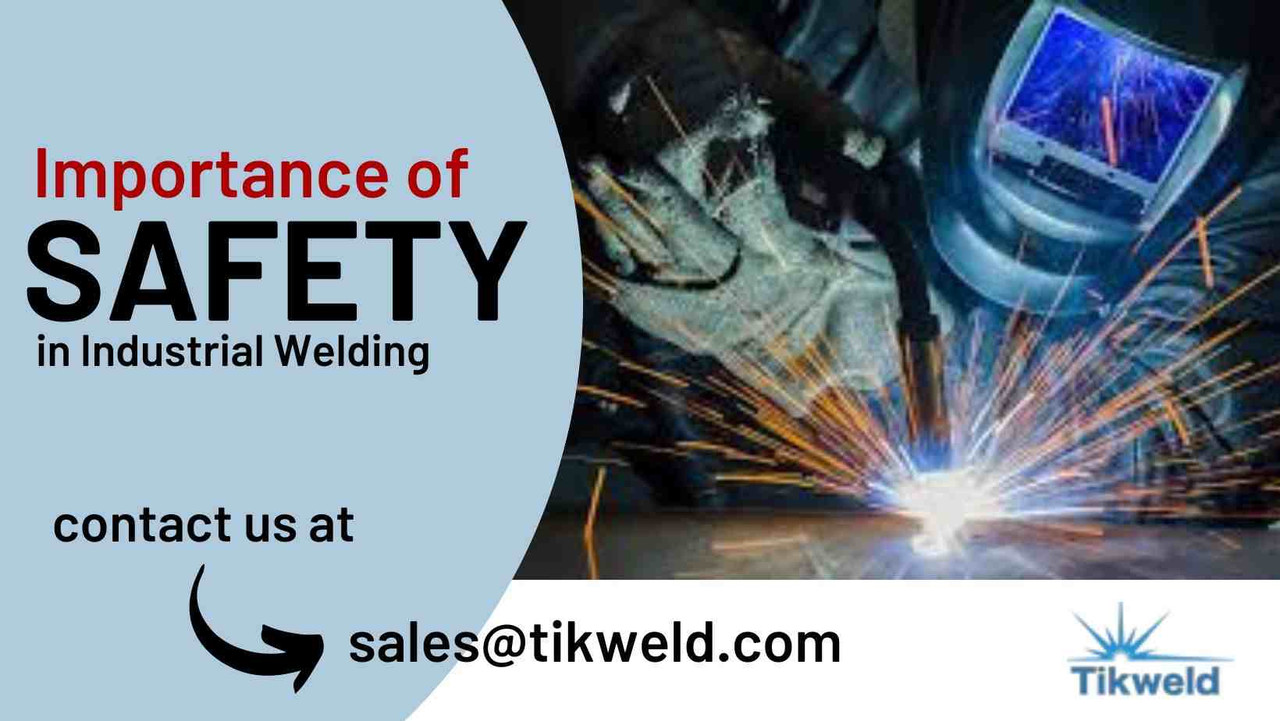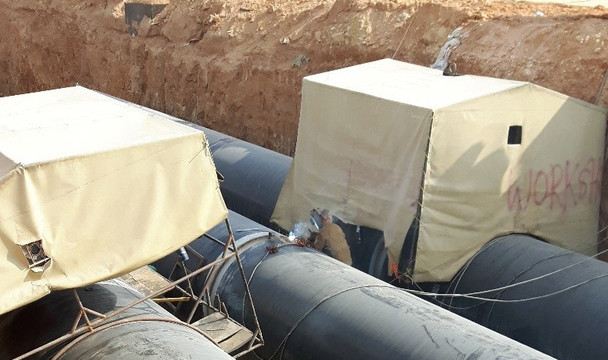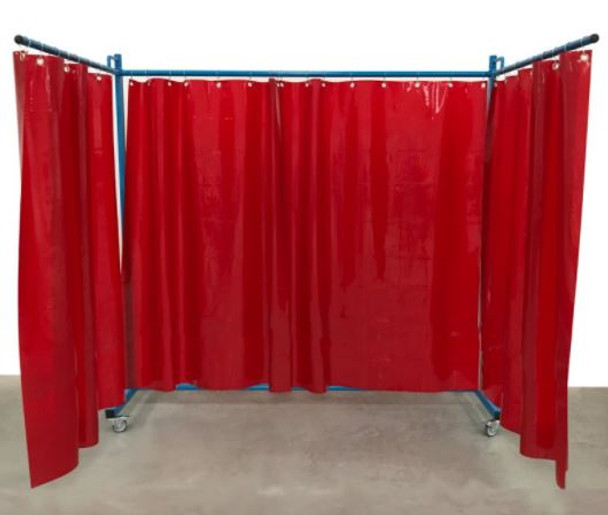Importance of Safety in Industrial Welding
Industrial welding is a crucial process in many sectors, including construction, automotive, aerospace, and manufacturing. It involves joining materials, usually metals, by melting the workpieces and adding a filler material to form a strong joint. While welding is essential in creating infrastructure and products, it comes with inherent risks that necessitate stringent safety measures. Hazards such as harmful fumes and gases, electric shocks, and potential fires and explosions make following safety guidelines important.
Practicing safe welding includes analyzing surroundings, correctly using tools and equipment, adhering to manufacturer guidelines, and ensuring the safety of others. By studying and updating safety procedures, using appropriate personal protective equipment (PPE), and following regulations from organizations like Office of Safety and Health Administration (OSHA), the American National Standards Institute (ANSI), the American Welding Society (AWS), welders can protect themselves and maintain a successful career.
Here at Tikweld Products and Services, we take extra precautions to ensure our welders-in-training are equipped with the knowledge and skills they need to be safe in the lab and workplace. Keep reading to learn all about welding safety, including hazards to avoid and important rules to follow. This article explores the importance of safety in industrial welding, highlighting common hazards, safety regulations, personal protective equipment (PPE), safe practices, and more.
 INGCO Auto Darkening Welding Helmet AHM008
INGCO Auto Darkening Welding Helmet AHM008
The Importance of Safety in industrial welding
Ensuring safety is crucial for protecting welders and maintaining productivity. Here are key points highlighting the importance of safety in industrial welding:
- Prevention of Injuries and Fatalities:
- Proper safety measures prevent serious injuries like burns, electric shocks, and eye damage.
- Reducing the risk of fatalities caused by fires, explosions, and toxic fumes.
- Health Protection:
- Preventing respiratory issues by using appropriate ventilation and respiratory protection.
- Minimizing long-term health effects caused by prolonged exposure to hazardous substances.
- Compliance with Regulations:
- Adhering to OSHA and ANSI standards ensures legal compliance and avoids penalties.
- Following AWS safety standards promotes best practices in the industry.
- Use of Personal Protective Equipment (PPE):
- Wearing welding helmets, gloves, protective clothing, and respirators to protect against physical and health hazards.
- Ensuring proper maintenance and use of PPE to provide effective protection.
- Implementation of Safe Practices:
- Conducting regular risk assessments and hazard analyses to identify and mitigate potential risks.
- Ensuring correct usage and maintenance of tools and equipment to prevent accidents.
- Training and Education:
- Providing comprehensive training programs for welders to understand safety protocols.
- Conducting regular safety drills and updates to keep welders informed about new safety practices.
- Creating a Safety Culture:
- Encouraging a workplace culture where safety is prioritized and workers feel responsible for their own and others' safety.
- Promoting the reporting of incidents and near-misses to continuously improve safety measures.
- Enhancing Productivity and Efficiency:
- A safe working environment reduces the likelihood of accidents, leading to fewer interruptions and higher productivity.
- Proper safety measures ensure that welding processes are carried out efficiently and without delays caused by accidents or injuries.
- Maintenance of Equipment:
- Regular inspection and maintenance of welding equipment to ensure it is in safe working condition.
- Identifying and repairing any wear and tear before it becomes a safety hazard.
- Protection of Surrounding Environment:
- Ensuring that welding activities do not pose risks to nearby workers or equipment.
- Implementing measures to prevent fires and explosions from spreading beyond the welding area.
 Welding Leather gloves - INGCO HGVW02
Welding Leather gloves - INGCO HGVW02
Common Hazards in Industrial Welding
Welding processes expose workers to a variety of hazards that can lead to serious injuries or even fatalities if not properly managed. Understanding these hazards is the first step in implementing effective safety measures.
- Electrical Hazards: Welding involves the use of electrical equipment that poses a risk of electric shock. Inadequate grounding, damaged cables, or faulty equipment can lead to serious injuries or death.
- Fire and Explosion Risks: Welding generates intense heat and sparks, which can ignite flammable materials in the vicinity. Improper handling of welding equipment and the presence of combustible gases further increase the risk of fire and explosions.
- Exposure to Toxic Fumes and Gases: Welding fumes contain harmful metals and chemical compounds that can cause respiratory problems, lung damage, and other health issues. Common hazardous substances include manganese, chromium, and nickel.
- Physical Injuries: Welders are at risk of burns from hot metal and UV radiation, eye damage from bright arcs, and cuts or punctures from handling sharp materials and tools.
- Ergonomic Risks: Welding often requires awkward postures and repetitive movements, leading to musculoskeletal disorders over time. Prolonged standing, bending, and lifting can result in chronic pain and injuries.
Safety Regulations and Standards
Compliance with safety regulations and standards is essential to minimize risks and protect welders. Regulatory bodies and organizations provide guidelines and standards to ensure safe welding practices.
- Overview of Relevant Safety Standards: Various organizations, such as the Occupational Safety and Health Administration (OSHA), American National Standards Institute (ANSI), and American Welding Society (AWS), have established safety standards for welding operations. These standards cover equipment safety, PPE requirements, ventilation, and more.
- Importance of Compliance with Safety Regulations: Adhering to safety regulations helps prevent accidents and injuries, reducing downtime and costs associated with workplace incidents. It also ensures legal compliance and protects the company from potential liabilities.
- Role of Safety Audits and Inspections: Regular safety audits and inspections are crucial for identifying potential hazards and ensuring that safety measures are in place. These audits help in maintaining compliance and improving workplace safety.
Personal Protective Equipment (PPE)
Proper use of PPE is vital in protecting welders from various hazards associated with welding.
- Types of PPE for Welders: Essential PPE includes welding helmets with appropriate filters, gloves, aprons, safety glasses, ear protection, and respiratory protection. Each type of PPE serves a specific purpose in shielding the welder from different risks.
- Proper Use and Maintenance of PPE: To ensure maximum protection, PPE must be used correctly and maintained regularly. Helmets and filters should be checked for cracks, gloves and aprons inspected for wear and tear, and respirators cleaned and stored properly.
- Benefits of Using Appropriate PPE: Using the right PPE significantly reduces the risk of injuries and health issues. It enhances the welder's confidence, allowing them to perform tasks more efficiently and safely.
 Rhino Weld Welders Split Leather Welding Jacket
Rhino Weld Welders Split Leather Welding Jacket
Safe Welding Practices
Implementing safe welding practices is essential to mitigate risks and ensure a safe working environment.
- Proper Ventilation and Fume Extraction Systems: Adequate ventilation is crucial in preventing the accumulation of hazardous fumes and gases. Fume extraction systems should be used to capture and remove contaminants from the air.
- Safe Handling and Storage of Welding Materials: Flammable and combustible materials must be stored in designated areas away from the welding zone. Proper handling techniques should be followed to prevent accidents.
- Importance of Maintaining Clean and Organized Workspaces: A clutter-free workspace reduces the risk of trips, falls, and accidental ignitions. Regular housekeeping practices should be enforced to keep the welding area safe and organized.
- Training and Certification Requirements for Welders: Proper training and certification ensure that welders are knowledgeable about safety practices and skilled in using welding equipment. Ongoing training helps in keeping welders updated with the latest safety protocols.
Equipment Safety
Ensuring the safety of welding equipment is fundamental to preventing accidents and maintaining a safe working environment.
- Regular Maintenance and Inspection of Welding Equipment: Regular maintenance schedules should be adhered to, ensuring that welding machines, cables, and accessories are in good working condition. Inspections should be conducted to identify wear and tear, and any faulty equipment should be repaired or replaced immediately.
- Safe Operation Procedures for Different Welding Machines: Welders must be trained in the specific operation procedures for the welding machines they use. This includes understanding the correct settings, safe startup and shutdown processes, and emergency procedures.
- Emergency Shutdown Procedures: Clear protocols for emergency shutdowns should be established and communicated to all welding personnel. This includes knowing how to quickly and safely turn off welding machines and secure the area in the event of an emergency.
Health and Safety Programs
Developing and implementing comprehensive health and safety programs is essential for fostering a culture of safety in the workplace.
- Developing and Implementing Health and Safety Policies: Companies should establish robust health and safety policies that cover all aspects of welding operations. These policies should be communicated clearly to all employees and regularly reviewed and updated.
- Conducting Risk Assessments and Hazard Analyses: Regular risk assessments and hazard analyses help in identifying potential risks and implementing measures to mitigate them. This proactive approach prevents accidents and ensures a safer working environment.
- Training Programs and Safety Drills for Welders: Ongoing training programs are crucial for keeping welders informed about the latest safety practices and protocols. Safety drills should be conducted regularly to prepare welders for emergency situations.
- Importance of Reporting and Documenting Incidents and Near-misses: Encouraging a culture of reporting incidents and near-misses helps in identifying potential hazards and improving safety measures. Thorough documentation and analysis of these reports can lead to better safety protocols and accident prevention.
Case Studies and Real-world Examples
Analyzing real-world examples and case studies provides valuable insights into the importance of safety in welding.
- Analysis of Welding-related Accidents and Their Causes: Examining past accidents helps in understanding the common causes and implementing measures to prevent similar incidents. Detailed analysis of these cases can highlight the importance of adhering to safety standards and protocols.
- Lessons Learned from Past Incidents: Learning from past incidents allows companies to improve their safety measures and avoid repeating mistakes. These lessons can be shared across the industry to enhance overall safety.
- Success Stories of Improved Safety Practices in Welding: Highlighting success stories where improved safety practices have led to a reduction in accidents and injuries can serve as motivation for other companies to implement similar measures.
Technological Advancements in Welding Safety
Technological advancements play a significant role in enhancing welding safety and reducing risks.
- New Safety Technologies and Innovations: Innovations such as advanced PPE, real-time monitoring systems, and improved ventilation technologies contribute to safer welding environments. These technologies help in identifying hazards early and preventing accidents.
- Role of Automation and Robotics in Reducing Risks: Automation and robotics can significantly reduce human exposure to hazardous welding processes. Robots can perform dangerous tasks with precision, minimizing the risk to human welders.
- Future Trends in Welding Safety: The future of welding safety lies in continued technological advancements and improved safety protocols. Emerging trends such as augmented reality training, IoT-enabled safety devices, and enhanced PPE will further enhance welding safety.
Train for a Career in Welding with us
Tikweld Products and Services offers an 18-week Welding Technology program designed to provide you with the hands-on training needed to excel as a welder in today's industry. Our program utilizes industry-standard technology and equipment to prepare you for an entry-level position in the field. To learn more, call us at 08071993873 to speak with one of our Admissions Representatives today.
Frequently Asked Questions
- What are the most common hazards associated with industrial welding?
- Common hazards include electrical shocks, fire and explosion risks, exposure to toxic fumes and gases, physical injuries such as burns and eye damage, and ergonomic risks from awkward postures and repetitive movements.
- Why is personal protective equipment (PPE) crucial for welders?
- PPE is essential for protecting welders from various hazards such as burns, eye injuries, and respiratory issues. Proper use and maintenance of PPE significantly reduce the risk of injuries and health problems.
- How can regular maintenance of welding equipment enhance safety?
- Regular maintenance ensures that welding equipment is in good working condition, reducing the likelihood of malfunctions that could lead to accidents. It also helps identify and repair any wear and tear before it becomes a safety hazard.
- What role do health and safety programs play in welding safety?
- Health and safety programs provide a structured approach to identifying and mitigating risks, training employees, and ensuring compliance with safety regulations. They foster a culture of safety and continuous improvement in the workplace.
- How are technological advancements improving welding safety?
- Technological advancements such as automation, advanced PPE, real-time monitoring systems, and improved ventilation technologies are enhancing welding safety by reducing human exposure to hazards and enabling more efficient hazard identification and prevention.
Conclusion
The importance of safety in industrial welding is paramount. Welding is a vital process across various industries, but it comes with inherent risks that require stringent safety measures to protect workers and maintain productivity. Understanding common hazards, adhering to safety regulations, and using appropriate personal protective equipment (PPE) are essential steps in fostering a safe welding environment.
Implementing safe practices, ensuring proper equipment maintenance, and developing comprehensive health and safety programs further contribute to a safer workplace. Regular risk assessments, continuous training, and the adoption of new safety technologies play a crucial role in minimizing risks and preventing accidents.
By learning from past incidents and leveraging technological advancements, the welding industry can continue to improve safety standards. Ultimately, a culture of safety not only protects welders but also enhances efficiency and productivity, ensuring the successful completion of projects across sectors.
At Tikweld Products and Services, we prioritize safety by equipping our welders-in-training with the knowledge and skills they need to work safely and effectively. For more information on welding safety and to explore our range of high-quality welding equipment and safety products, visit Tikweld Product and Services. Protect your workforce and enhance productivity by investing in the best tools and resources available.










